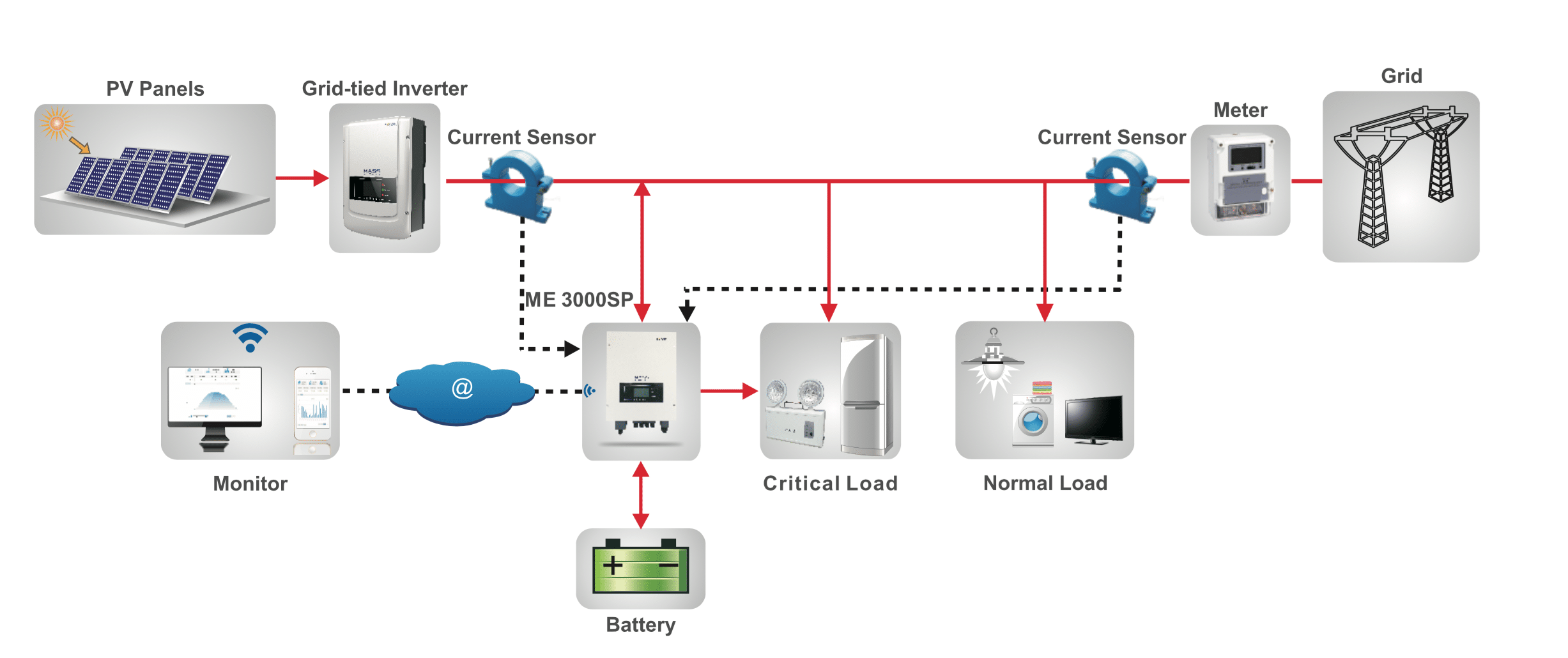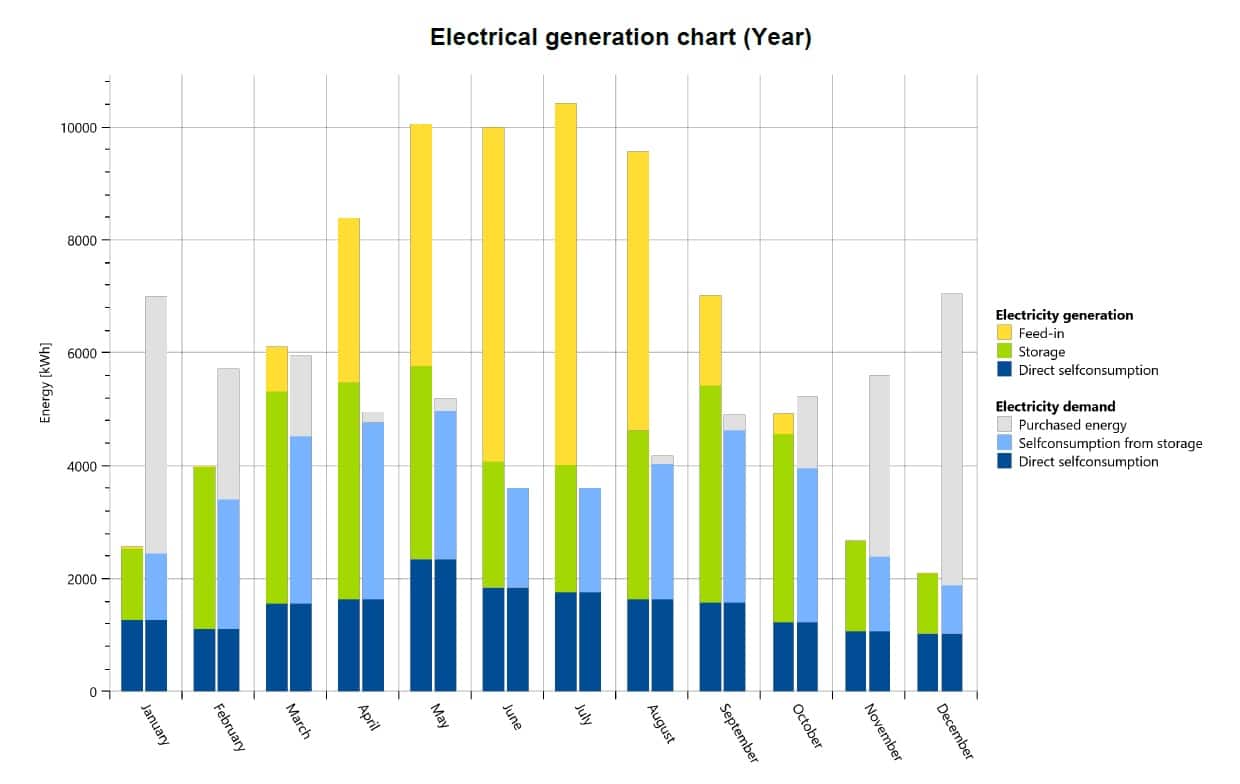Imagine harnessing the power of the sun and storing it for later use, turning your home into a self-sufficient energy powerhouse. Adding a battery to your solar system can help you achieve just that. In this comprehensive guide, we’ll dive into the ins and outs of integrating a battery into your solar power system. So, let’s get started!
Why Add a Battery to Your Solar System?
There are many reasons to add a battery to your solar system:
- Energy independence: A battery allows you to store excess solar energy for use when the sun isn’t shining, reducing your reliance on the grid.
- Backup power: During power outages, a battery can keep your critical appliances running.
- Financial savings: By using stored solar energy during peak times, you can avoid high electricity rates and save on your utility bills.
- Reduced carbon footprint: By using renewable energy, you can minimize your carbon footprint and contribute to a greener planet.
Choosing the Right Battery Type
There are various battery types available for solar energy storage, with lithium-ion and lead-acid batteries being the most popular. Lithium-ion batteries, such as LiFePO4 batteries, are known for their high efficiency, long cycle life, and lightweight design. Lead-acid batteries, on the other hand, are more affordable but have a shorter life span and lower energy density.
To choose the right battery type for your needs, consider factors such as cost, performance, and maintenance requirements. For more information on different battery technologies, check out our comprehensive guide to cutting-edge battery technologies.
Sizing Your Solar Battery
When selecting a battery, it’s essential to consider its capacity (measured in kilowatt-hours or kWh) and power output (measured in kilowatts or kW). To determine the appropriate battery size for your solar system, follow these steps:
- Estimate your daily energy consumption: Calculate the average energy usage of your household appliances in kWh.
- Determine your desired autonomy: Decide how many hours or days you want your battery to provide backup power.
- Factor in energy efficiency: Account for energy losses during charging and discharging, as well as any system inefficiencies.
- Choose a battery with sufficient capacity: Select a battery that can store enough energy to meet your daily consumption and desired autonomy.
For a more detailed explanation on sizing a solar energy storage system, refer to our article on sizing solar energy storage and EV charging infrastructure.
Installing and Integrating a Solar Battery
To integrate a battery into your solar system, you’ll need to choose between an AC-coupled and a DC-coupled setup. In an AC-coupled system, a separate hybrid solar inverter is used to manage both solar panels and the battery. In a DC-coupled system, a single inverter handles both solar panel and battery management.
A professional solar installer can help you determine the best setup for your system and ensure proper installation and integration of your solar battery. Be sure to consult local regulations and codes before installation to ensure compliance and safety.
Maintaining Your Solar Battery
Proper maintenance is essential for the longevity and performance of your solar battery. Here are some key maintenance tips:
- Monitor battery performance: Regularly check your battery’s state of charge (SOC) and health using a battery monitoring system.
- Optimize usage: Avoid discharging your battery below the recommended depth of discharge (DoD) to prolong its life span.
- Temperature control: Ensure the battery is installed in a well-ventilated area with a stable temperature, as extreme temperatures can impact its performance and life span.
- Inspect and clean: Periodically inspect your battery for any signs of wear, corrosion, or leakage, and keep it clean and dust-free.
The Cost of Adding a Battery to Your Solar System
The cost of adding a battery to your solar system depends on factors such as battery type, capacity, installation, and any additional components required. To get an idea of the costs involved, check out our article on solar with battery price.
While the upfront costs of a solar battery can be significant, the long-term benefits of energy independence, backup power, and reduced electricity bills can offset the initial investment. It’s important to weigh the pros and cons before making a decision.
Common Mistakes to Avoid
When integrating a battery into your solar system, it’s crucial to avoid common pitfalls. Here are a few mistakes to watch out for:
- Under-sizing or over-sizing your battery: Incorrectly sizing your battery can lead to insufficient energy storage or an unnecessarily expensive system. Refer to our sizing guide for assistance.
- Choosing the wrong battery type: Selecting a battery that doesn’t meet your performance, cost, or maintenance requirements can result in a less-than-optimal system. Explore various battery technologies to make an informed decision.
- Skimping on installation: Hiring an inexperienced installer or attempting a DIY installation can lead to safety hazards and decreased system performance. Always work with a qualified professional.
- Ignoring maintenance: Neglecting to maintain your battery can shorten its life span and reduce its efficiency. Follow our maintenance tips to keep your battery in top shape.
For more common mistakes to avoid, check out our article on 33 mistakes to avoid when choosing an energy storage system.
Final Thoughts
Adding a battery to your solar system can unlock the full potential of solar energy, providing energy independence, backup power, and financial savings. By carefully selecting the right battery type, sizing it correctly, and ensuring proper installation and maintenance, you can supercharge your solar experience and contribute to a more sustainable future.

Case Study: Supercharging a Solar System with Battery Storage – A Homeowner’s Success Story
Introduction
In this case study, we will explore how a homeowner, Sarah, successfully added a battery storage system to her existing solar installation, reaping the benefits of energy independence, cost savings, and reduced carbon footprint. We will detail Sarah’s decision-making process, implementation, and results, providing insights and lessons learned from her experience.Background
Sarah, a homeowner living in a suburban area, had installed a 5kW solar panel system on her roof two years ago to reduce her electricity bills and contribute to a greener environment. Although she was pleased with the solar system’s performance, she wanted to maximize its potential by adding a battery storage system. Sarah’s goals were to:- Achieve energy independence and reduce her reliance on the grid.
- Have backup power during grid outages.
- Further decrease her electricity bills by using stored solar energy during peak times.
Decision-making Process
To find the best solution, Sarah conducted thorough research on different battery types, sizes, and costs. She consulted various resources, including our articles on battery technologies and solar with battery price, to make an informed decision. Based on her research, Sarah determined that a lithium-ion battery would best suit her needs, as it offered higher efficiency, longer life span, and lower maintenance compared to lead-acid batteries. She specifically chose a LiFePO4 battery due to its increased safety features and stable performance. To size her battery system, Sarah calculated her daily energy consumption and desired autonomy. She then factored in energy efficiency and selected a 10kWh battery capacity, which would meet her needs and provide backup power for critical appliances during outages.Implementation
Sarah hired a reputable solar installer with experience in battery integration to assess her solar system and recommend the best setup. The installer suggested an AC-coupled system using a hybrid solar inverter to manage both the solar panels and the battery. This configuration allowed for a seamless integration of the battery with her existing solar system. The installer also ensured that the battery installation met local regulations and codes, and provided guidance on proper battery maintenance.Results
After adding the battery storage system to her solar installation, Sarah experienced the following benefits:- Energy independence: With the solar battery system in place, Sarah reduced her reliance on the grid by using stored solar energy during non-sunny hours and peak times.
- Backup power: During a power outage, the battery system provided essential backup power for critical appliances, ensuring Sarah’s comfort and safety.
- Cost savings: By using stored solar energy during peak hours, Sarah was able to avoid high electricity rates, further reducing her electricity bills.
Key Takeaways
Sarah’s experience demonstrates the value of adding a battery storage system to an existing solar installation. By carefully researching, planning, and working with a qualified installer, homeowners can successfully integrate a battery system that meets their needs and delivers significant benefits. This case study highlights the importance of understanding your energy needs, selecting the right battery type and size, and ensuring proper installation and maintenance for a successful solar battery storage system.Frequently Asked Questions
Q: How much does it cost to add a battery to a solar system? A: The cost of adding a battery to your solar system depends on factors such as battery type, capacity, installation, and any additional components required. For more information on pricing, check out our article on solar with battery price. Q: What are the benefits of adding a battery to my solar system? A: Adding a battery to your solar system offers several benefits, including energy independence, backup power during outages, financial savings by using stored solar energy during peak times, and reduced carbon footprint. Q: What type of battery should I use for my solar system? A: There are various battery types available for solar energy storage, with lithium-ion and lead-acid batteries being the most popular. To choose the right battery type for your needs, consider factors such as cost, performance, and maintenance requirements. For more information on different battery technologies, check out our comprehensive guide to cutting-edge battery technologies. Q: How do I size a solar battery for my system? A: To determine the appropriate battery size for your solar system, estimate your daily energy consumption, decide on your desired autonomy, factor in energy efficiency, and choose a battery with sufficient capacity to meet your needs. For a more detailed explanation, refer to our article on sizing solar energy storage and EV charging infrastructure. Q: Can I expand my solar battery system in the future? A: Yes, you can expand your solar battery system to accommodate increased energy demand. When planning an expansion, evaluate your energy needs, ensure compatibility with your existing system, and work with a qualified professional to ensure proper installation and integration. Q: How do I maintain my solar battery? A: Proper maintenance is crucial for the longevity and performance of your solar battery. Monitor battery performance, optimize usage, control temperature, and inspect and clean your battery regularly. For more detailed maintenance tips, refer to the maintaining your solar battery section of this guide.Q: Can I add a battery to my existing solar system?
A: Yes, you can add a battery to your existing solar system. To do so, you’ll need to evaluate your energy needs, choose the appropriate battery type and capacity, and work with a qualified professional to ensure proper integration with your solar panels and other system components.
Q: Is it worth adding a battery to solar panels?
A: Adding a battery to your solar panels can be a worthwhile investment if you want to achieve energy independence, have backup power during outages, and save on electricity costs by using stored solar energy during peak hours. However, it’s important to consider factors such as battery costs, your specific energy needs, and local electricity rates to determine if adding a battery is the right choice for you.
Q: How long will a 10kW battery last?
A: The duration a 10kW battery will last depends on your energy consumption. If your home uses 1kW of power per hour, a 10kW battery will last for 10 hours. However, it’s important to note that battery capacity will decrease over time due to factors such as aging and temperature.
Q: How long will a 5kW battery last?
A: Similar to a 10kW battery, the duration a 5kW battery will last depends on your energy consumption. If your home uses 1kW of power per hour, a 5kW battery will last for 5 hours. Keep in mind that battery capacity will decrease over time due to aging and temperature.
Q: Is a 10kW battery enough to run a house?
A: A 10kW battery may be enough to run a house, depending on your specific energy needs. To determine if a 10kW battery is sufficient, calculate your average daily energy consumption and compare it to the battery’s capacity. If your energy needs exceed the battery’s capacity, you may need a larger battery or additional batteries.
Q: Can 10kW power a house?
A: A 10kW solar system can generate enough power for a house, depending on your specific energy needs. On average, a 10kW solar system can produce between 35 to 50 kWh of electricity per day, which may be sufficient for a medium-sized household with moderate energy consumption.
Q: Is 5kW solar enough to run a house?
A: A 5kW solar system can generate enough power for a small to medium-sized house with moderate energy consumption. On average, a 5kW solar system can produce between 17 to 25 kWh of electricity per day. To determine if a 5kW solar system is sufficient for your needs, calculate your average daily energy consumption and compare it to the system’s output.


